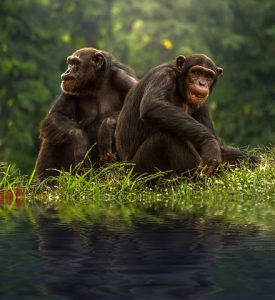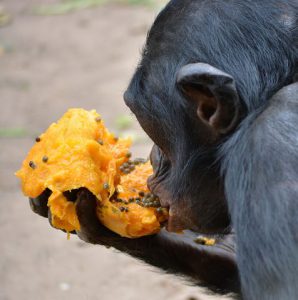Friday
Featured StoriesCreating Enlightened Society
exploring the biological basis of how cultures change
by Shastri Donna Williams
 This morning after reading about a possible reversal by the Trump Administration of a ban on uranium mining in the Grand Canyon, I thought I would share some of what I’ve been studying, as a possible cheering-up tonic.
This morning after reading about a possible reversal by the Trump Administration of a ban on uranium mining in the Grand Canyon, I thought I would share some of what I’ve been studying, as a possible cheering-up tonic.
I’ve recently been reading and exploring how nature can restore us. The natural landscape can heal our fractured states of mind by the direct connection with sight, smell, touch, sound and taste. Much information exists under such headings as therapeutic recreation, ecological psychology, biophilic design and work by David Strayer in Utah on attention, and Florence Williams in her book “The Nature Fix.”
While studying and reading in this field, a friend sent me a link to a talk http://lfla.org/media-archive/behave-biology-humans-best-worst/ by Dr. Robert Sapolsky, neuro-endocrinologist and Professor of Biology at Stanford University (the talk is based on his new book Behave: the Biology of Humans at our Best and Worst). His book examines how humans and other primates create social culture. After spending 30 years in Kenya studying bonobos (a type of ape closely related to chimps and us), he writes about the interplay between their hormones, brain and evolutionary development, and social structure.
This is his story of cultural transformation:
A garbage dump opened up at one end of the national park where Dr. Sapolsky had been studying bonobos for many years. 30 young males from his study group/troupe migrated to this dump daily to feast on the food tossed there. Sadly, through an act of minor (or perhaps major) corruption some tainted meat had been included in the dump contents. All of the bonobos from Sapolsky’s study group who had been visiting the dump died quickly from bovine tuberculosis.
This reduced his troupe to ½ the original number of males, with a two to one ratio of females to males. The remaining males were, as he puts it, “nice guys.” The entire troupe was less aggressive, more connected socially with others in the troupe, and took part in daily grooming rituals. Dr. Sapolsky then moved his studies to another location 40 miles away, as he was very distressed by the loss of so many members of his original study group. A decade later, he took his soon-to-be wife to meet his original study troupe of baboons. They were still very socially affiliated, sat in close contact, but something perplexing had happened.
“All the old males who had survived the TB crisis had long since died. Who were the new adults? At puberty the adolescent males routinely leave their natal troupe and join a different troupe, as close as next door or as far away as thirty miles. They will now spend their remaining lives with this new adopted troupe. So by a decade later all of the adult males had transferred in, having grown up (until puberty) in a normal baboon troupe. They all came in as the same jerky adolescent male baboon that you would find in any other setting. Somehow they learned in this new group, ‘we don’t do stuff like that here.’”
 “I spent the next decade studying what the mechanism was for this non-human primate’s cultural transmission of this social culture. It had a whole lot to do with the females being more affiliative with the new males, and it took about 6 months for previously jerky males to adapt to the norms of their adopted troupe. Scientists from the early 60s on have classified these primates as the textbook example of highly aggressive, stratified, hierarchical, male-dominated primates. So what I am seeing is this cultural transmission; this is what evolution has produced. All it took was one generation and they came up with a completely different social system that was transmissible multi-generationally. Essentially what that means is that anybody who says there is inevitability about human cultural systems and our least palatable ones, knows nothing about humans or baboons – they don’t have a leg to stand on. So it’s a real message of hope. Yes, our behavior is grounded in our biology but it’s not universal and culture has a huge impact.”
“I spent the next decade studying what the mechanism was for this non-human primate’s cultural transmission of this social culture. It had a whole lot to do with the females being more affiliative with the new males, and it took about 6 months for previously jerky males to adapt to the norms of their adopted troupe. Scientists from the early 60s on have classified these primates as the textbook example of highly aggressive, stratified, hierarchical, male-dominated primates. So what I am seeing is this cultural transmission; this is what evolution has produced. All it took was one generation and they came up with a completely different social system that was transmissible multi-generationally. Essentially what that means is that anybody who says there is inevitability about human cultural systems and our least palatable ones, knows nothing about humans or baboons – they don’t have a leg to stand on. So it’s a real message of hope. Yes, our behavior is grounded in our biology but it’s not universal and culture has a huge impact.”
Thinking and reflecting on the above inspires me this morning: knowing that the short-sighted, seeming societally-destructive behaviors I may encounter in the day’s news reports are mutable.
Our culture can change and those changes can be transmitted to other generations. I can afford to trust that our practices of kindness, bravery, and inclusion can change our present culture and I can reopen the paper (i.e.click on another link) and face the current news with trust and optimism.
 Shastri Williams will be teaching a weekend on Contemplative Ecology on Sept 1-4 at Sky Lake Lodge https://skylake.shambhala.org/. Participants will explore the five senses, and discover the healing, restorative effects available through sight, sound, smell, taste, and touch. The program begins with mindfulness meditation practice and moves out into the forest, rocks, and trees experiencing the rich landscape of this area of the Hudson Valley and the Shawangunk Mountains.
Shastri Williams will be teaching a weekend on Contemplative Ecology on Sept 1-4 at Sky Lake Lodge https://skylake.shambhala.org/. Participants will explore the five senses, and discover the healing, restorative effects available through sight, sound, smell, taste, and touch. The program begins with mindfulness meditation practice and moves out into the forest, rocks, and trees experiencing the rich landscape of this area of the Hudson Valley and the Shawangunk Mountains.
This story originally appeared on the White River Shambhala Center website: https://whiteriver.shambhala.org/blog/






Jul 9, 2017
Reply
Loved it!!! Looking forward to see you!!!
Jul 8, 2017
Reply
I liked your article. A minor correction: I believe Sapolsky studied baboons, not bonobos. Bonobos are known for being relatively peaceful.
Jul 7, 2017
Reply
Hi Donna, Thanks for this post — nice to see your face!
Mark
Jul 7, 2017
Reply
Thank you Donna – your article brought tears to my eyes, a very nice way to start the morning!
Jul 7, 2017
Reply
Thank you Donna. I really enjoyed this. Keep doing what you are doing!
Jul 7, 2017
Reply
Really good to take this in – the view that is needed right now. Thank you . . . !
Jul 7, 2017
Reply
Thanks, Donna, Great story. We will keep the faith.
Jul 1, 2017
Reply
Wonderful! Thank you!